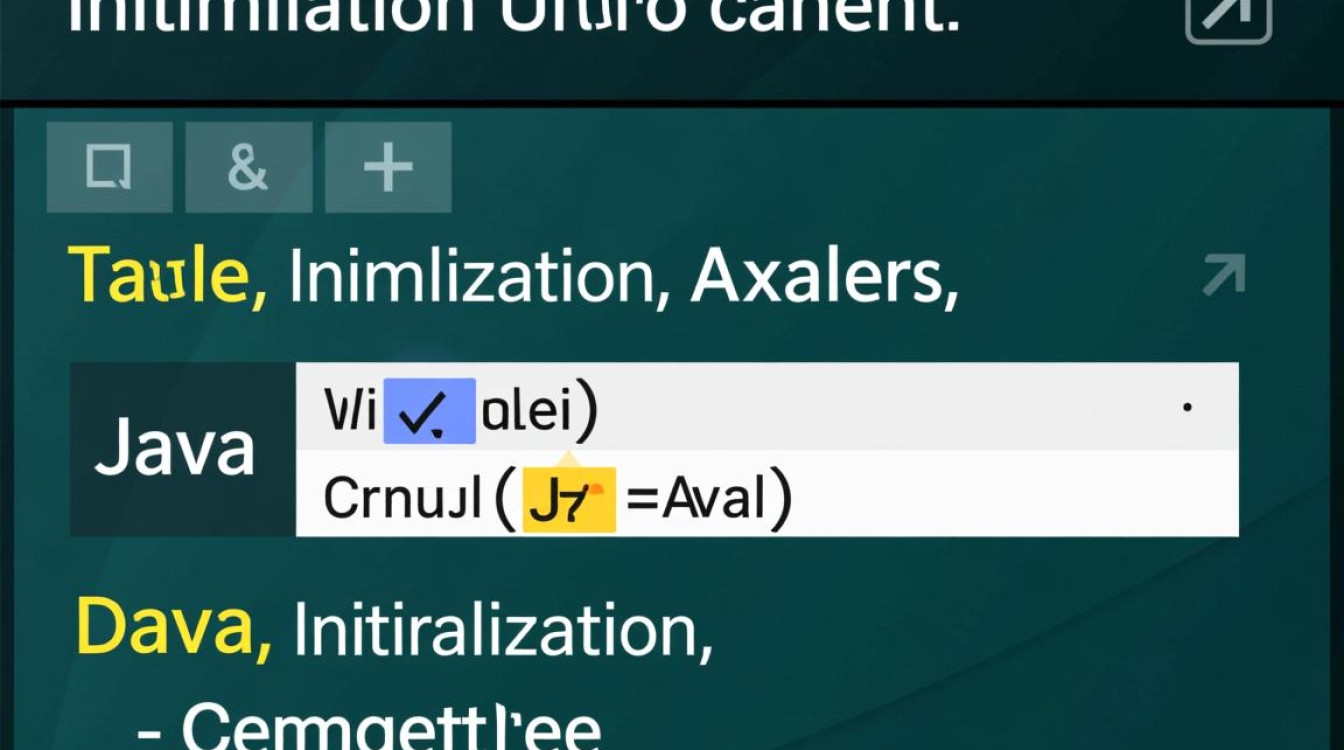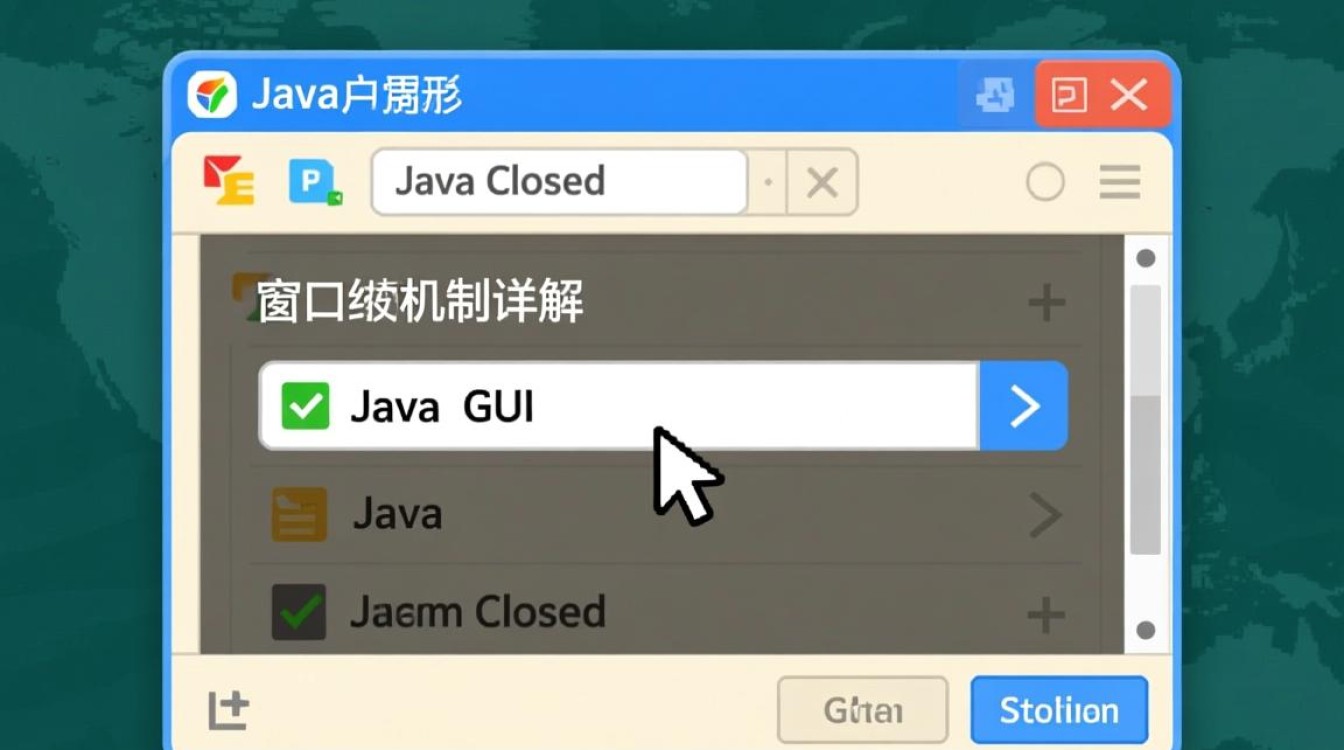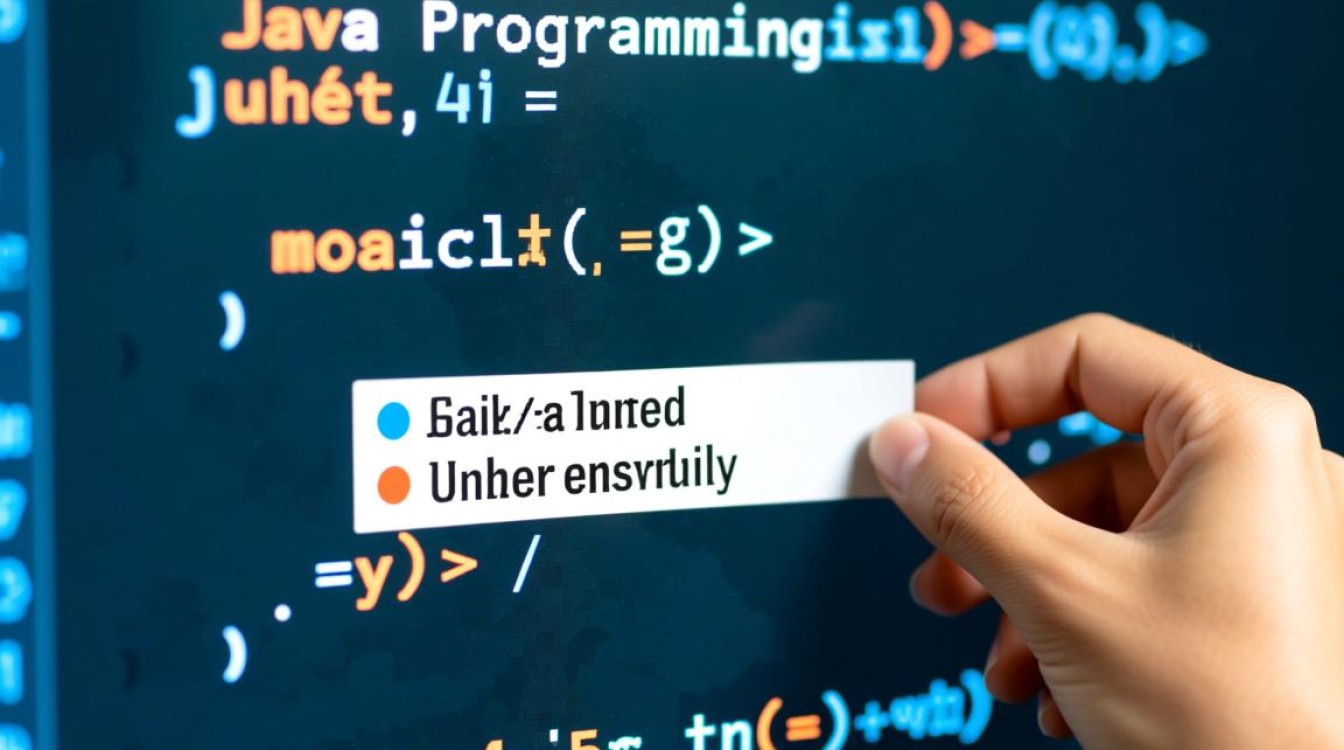在Java编程中实现自动关机功能,可以通过调用操作系统命令或使用Java原生API来完成,这一功能在需要定时结束任务、维护系统或实现自动化流程的场景中非常实用,本文将详细介绍几种常见的实现方法,包括基于Runtime类执行系统命令、使用ProcessBuilder类、结合定时任务调度器,以及跨平台解决方案的设计思路,并附上完整的代码示例和注意事项。

基于Runtime类执行系统命令
Runtime类是Java中与操作系统交互的核心类之一,通过调用其exec()方法可以执行系统命令,在Windows系统中,自动关机命令为shutdown -s -t 秒数,其中-t参数指定关机倒计时时间(秒);在Linux或macOS系统中,则使用shutdown -h +分钟数命令,其中后跟分钟数,以下是具体实现代码:
public class ShutdownByRuntime {
public static void shutdown(int seconds) {
String os = System.getProperty("os.name").toLowerCase();
try {
Process process;
if (os.contains("win")) {
process = Runtime.getRuntime().exec("shutdown /s /t " + seconds);
} else if (os.contains("nix") || os.contains("nux") || os.contains("mac")) {
process = Runtime.getRuntime().exec("shutdown -h +" + (seconds / 60));
} else {
throw new UnsupportedOperationException("Unsupported operating system");
}
process.waitFor();
} catch (Exception e) {
e.printStackTrace();
}
}
}
使用ProcessBuilder类优化命令执行
ProcessBuilder类相比Runtime类提供了更灵活的进程管理方式,可以设置工作目录、环境变量,并更好地处理命令执行错误,以下是使用ProcessBuilder实现的自动关机代码:
import java.util.List;
public class ShutdownByProcessBuilder {
public static void shutdown(int delaySeconds) {
String os = System.getProperty("os.name").toLowerCase();
List<String> command;
if (os.contains("win")) {
command = List.of("cmd.exe", "/c", "shutdown", "/s", "/t", String.valueOf(delaySeconds));
} else if (os.contains("nix") || os.contains("nux") || os.contains("mac")) {
int delayMinutes = delaySeconds / 60;
command = List.of("shutdown", "-h", "+" + delayMinutes);
} else {
throw new UnsupportedOperationException("Unsupported operating system");
}
try {
ProcessBuilder pb = new ProcessBuilder(command);
pb.inheritIO().start();
} catch (Exception e) {
e.printStackTrace();
}
}
}
结合定时任务实现定时关机
在实际应用中,自动关机通常需要结合定时任务调度器(如ScheduledExecutorService或第三方库Quartz)来实现,以下是基于ScheduledExecutorService的示例代码:

import java.util.concurrent.Executors;
import java.util.concurrent.ScheduledExecutorService;
import java.util.concurrent.TimeUnit;
public class ScheduledShutdown {
private static final ScheduledExecutorService scheduler = Executors.newScheduledThreadPool(1);
public static void scheduleShutdown(int initialDelay, int shutdownDelay) {
scheduler.schedule(() -> {
System.out.println("Task completed, initiating shutdown...");
ShutdownByProcessBuilder.shutdown(shutdownDelay);
}, initialDelay, TimeUnit.SECONDS);
}
public static void main(String[] args) {
// 10分钟后执行任务,任务完成后5秒关机
scheduleShutdown(600, 5);
}
}
跨平台解决方案设计
为了实现真正的跨平台自动关机,需要考虑不同操作系统的命令差异,并提供统一的接口,以下是封装后的跨平台工具类:
public class ShutdownUtil {
public enum ShutdownAction {
SHUTDOWN, RESTART, LOGOUT
}
public static void shutdown(int delaySeconds, ShutdownAction action) {
String os = System.getProperty("os.name").toLowerCase();
try {
ProcessBuilder pb;
if (os.contains("win")) {
String command = "cmd.exe /c " + getWindowsCommand(action, delaySeconds);
pb = new ProcessBuilder(command.split(" "));
} else if (os.contains("nix") || os.contains("nux") || os.contains("mac")) {
String command = getUnixCommand(action, delaySeconds);
pb = new ProcessBuilder("sh", "-c", command);
} else {
throw new UnsupportedOperationException("Unsupported operating system: " + os);
}
pb.inheritIO().start();
} catch (Exception e) {
throw new RuntimeException("Failed to initiate shutdown", e);
}
}
private static String getWindowsCommand(ShutdownAction action, int delaySeconds) {
String cmd = action == ShutdownAction.RESTART ? "/r" :
action == ShutdownAction.LOGOUT ? "/l" : "/s";
return "shutdown " + cmd + " /t " + delaySeconds;
}
private static String getUnixCommand(ShutdownAction action, int delaySeconds) {
String cmd = action == ShutdownAction.RESTART ? "-r" :
action == ShutdownAction.LOGOUT ? "halt" : "-h";
int delayMinutes = delaySeconds / 60;
return "shutdown " + cmd + " +" + delayMinutes;
}
}
注意事项与最佳实践
- 权限问题:执行关机命令通常需要管理员/root权限,确保Java进程具有相应权限。
- 命令安全:避免直接拼接用户输入到系统命令中,防止命令注入攻击。
- 异常处理:妥善处理命令执行异常,提供友好的错误提示。
- 用户交互:在自动关机前应给予用户提示,避免数据丢失。
- 测试验证:在不同操作系统上充分测试,确保命令兼容性。
- 替代方案:对于企业级应用,可考虑使用系统管理工具(如Ansible、SaltStack)实现更可控的关机流程。
完整应用示例
以下是一个结合Swing GUI的自动关机工具示例,允许用户设置关机时间和操作类型:
import javax.swing.*;
import java.awt.*;
import java.awt.event.ActionEvent;
import java.awt.event.ActionListener;
public class ShutdownTool extends JFrame {
private JComboBox<ShutdownUtil.ShutdownAction> actionCombo;
private JSpinner timeSpinner;
private JButton executeButton;
public ShutdownTool() {
setTitle("自动关机工具");
setSize(400, 200);
setDefaultCloseOperation(JFrame.EXIT_ON_CLOSE);
setLayout(new FlowLayout());
actionCombo = new JComboBox<>(ShutdownUtil.ShutdownAction.values());
timeSpinner = new JSpinner(new SpinnerNumberModel(5, 1, 1440, 1));
executeButton = new JButton("执行");
executeButton.addActionListener(new ActionListener() {
@Override
public void actionPerformed(ActionEvent e) {
int delay = (int) timeSpinner.getValue() * 60;
ShutdownUtil.ShutdownAction action =
(ShutdownUtil.ShutdownAction) actionCombo.getSelectedItem();
int confirm = JOptionPane.showConfirmDialog(
ShutdownTool.this,
"确定要在" + timeSpinner.getValue() + "分钟后" +
getActionDescription(action) + "吗?",
"确认操作",
JOptionPane.YES_NO_OPTION
);
if (confirm == JOptionPane.YES_OPTION) {
ShutdownUtil.shutdown(delay, action);
JOptionPane.showMessageDialog(
ShutdownTool.this,
"操作已成功提交!"
);
}
}
});
add(new JLabel("操作类型:"));
add(actionCombo);
add(new JLabel("延迟时间(分钟):"));
add(timeSpinner);
add(executeButton);
}
private String getActionDescription(ShutdownUtil.ShutdownAction action) {
return switch (action) {
case SHUTDOWN -> "关机";
case RESTART -> "重启";
case LOGOUT -> "注销";
};
}
public static void main(String[] args) {
SwingUtilities.invokeLater(() -> new ShutdownTool().setVisible(true));
}
}
通过以上方法,开发者可以根据实际需求选择合适的自动关机实现方案,无论是简单的命令执行,还是复杂的定时任务调度,Java都能提供灵活且可靠的解决方案,在实际应用中,建议结合具体场景选择最适合的实现方式,并充分考虑系统的安全性和用户体验。




















